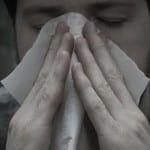
Ragweed Alert! How to Survive 2023’s Supercharged Fall Allergy Season
If you woke up this morning with a stuffy head and watering eyes, you’re not alone. Fall allergy season is now in high gear, and lots of us in all parts of the country are feeling pretty miserable.
It’s no wonder: Weather conditions and other factors have conspired to make 2023’s fall allergy season a real doozy. Whether or not you live in one of the worst cities for fall allergies, you’re probably in the line of fire for at least one fall allergen.
There are things you can do, though, other than just wishing that winter would hurry up and get here. Read on for some tips for surviving the onslaught of fall allergy symptoms.
The Big Fall Allergy Season Culprits: Ragweed and Mold
Ragweed is very common in the Midwest and the Mississippi River Basin.
Ragweed blooms from mid-August until winter, and is the guilty party behind lots of fall allergy symptoms: According to Health Magazine, ragweed is “the most allergenic” plant in the U.S., with about 75% of pollen allergy sufferers showing a sensitivity to this sneeze-inducing weed.
Not only have recent years seen bumper crops of ragweed; because of increased carbon dioxide due to pollution, each grain of ragweed pollen is nowsuper-charged with more allergen than it used to be.
Mold can grow in your house, but it also becomes a big problem for allergy sufferers outdoors during the fall. Recent warm, moist weather in much of the country means that this fall could be worse than usual when it comes to mold allergies.
Once the leaves begin to fall, they create the perfect environment for nurturing mold spores and wreaking havoc on mold allergy sufferers.
Tips for Avoiding Ragweed
If you are allergic to ragweed, the best thing to do is to keep ragweed pollen out of your system as well as you can. While it’s impossible to avoid this ubiquitous weed if you live within its territory, there are things you can do to minimize your exposure to ragweed pollen.
WebMD and the Asthma and Allergy Foundation of America recommend that you:
- Stay indoors with the windows and doors shut whenever possible. This is most important between 10 a.m. and 4 p.m., when ragweed pollen is at its highest airborne concentration. When driving, keep the windows up and the air conditioner on, to filter out some of the ragweed pollen.
- Change the filters on your heating and air conditioning systems, so the filters can remove as much pollen as possible from your home’s air. Don’t forget to change your car’s air filter, as well.
- Try HEPA filters in your home, and purchase a vacuum cleaner equipped with a HEPA filter. These filters will remove more ragweed pollen from the air in your home.
- Change your clothes when you get home after spending time outside, so you aren’t carrying ragweed pollen around with you.
- Shower before bed to remove ragweed pollen from your body, face and hair before you turn in for the night.
- Dry your clothes in the dryer, rather than out on the clothesline. While you might enjoy the fresh scent of line-dried clothes, it just isn’t worth the extra dose of ragweed pollen you’ll get.
Tips for Avoiding Mold
Mold can be a problem for allergy sufferers both indoors and outdoors, so WebMD and the Asthma and Allergy Foundation of America recommend that you:
- Stay indoors with the windows and doors shut whenever possible. When driving, keep the windows up and the air conditioner on, to filter out some of the mold spores.
- Change the filters on your heating and air conditioning systems, so the filters can remove as much mold as possible from your home’s air. Don’t forget to change your car’s air filter, as well.
- Dry your clothes in the dryer rather than outside, to avoid picking up airborne mold spores.
- Use a HEPA filter to remove airborne mold spores indoors.
- Use a de-humidifier if necessary, to keep indoor humidity between 35 and 50 percent and discourage mold growth.
- Keep your yard free of fallen leaves and damp firewood, which provide good environments for mold growth.
- Wear a mask while raking leaves, because mold spores in the leaf piles become airborne when you rake. Keep your child away from the leaf pile if he or she is allergic to mold, no matter how fun a romp in the fall leaves may be.
Treating Fall Allergy Season
If you think you might have allergies, talk to your doctor to get an accurate diagnosis and discuss treatment options. Common signs of allergies to airborne allergens such as ragweed and mold include sneezing, eyes that are itchy, red or watery, an itchy nose, coughing, and dark circles under the eyes.
Here are some of the available treatments for fall allergies:
- Irrigating your nose with saline once or twice a day, such as with a neti pot.
- Over-the-counter oral antihistamines such as Allegra® (fexofenadine HCl), Zyrtec® (cetirizine), Claritin® (loratadine) or Benadryl® (diphenhydramine).
- Antihistamine eyedrops, such as Alaway® (ketotifen) or Patanol® (olopatadine).
- Prescription nasal sprays to reduce nasal inflammation, such as Afrin® (oxymetazoline HCl).
- Allergy shots.
Keep pollen out of your home and reduce your allergy symptoms with our tips here!
Beat ragweed and mold, and have a blast this fall!
Photo courtesy of Sharon Mollerus.











